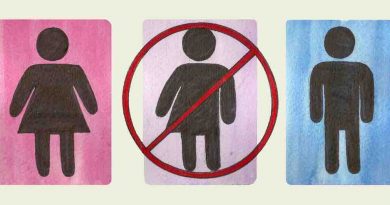“Build the Wall” Chalked onto UWT Campus Building
The weekend of April 16th, UWT’s GWP building and different pieces of the Grand Staircase were chalked with “Build the Wall”—one of Donald Trump’s most famous tag lines during his campaign. “Trump 2016” was also a tag line written on the property. Security was quick to wash away the message, but questions still remain as to who was behind the act.
In 2015, UW Tacoma was ranked one of the top 50 most ethnically diverse university campuses in the nation, according to Best College Reviews. Although 44% of UWT students are Caucasian/white, the majority of students are of a minority group.
According to the UWT enrollment site, 20% of its students are Asian Americans, 11% are Hispanic/Latino, 10% African American, 7% international students, 2% Hawaiian/Pacific Islander, and 2% American Indian. This raises the question of why UWT was the target.
This year’s GOP presidential hopeful, Donald Trump, has made headlines for his controversial rhetoric. His statements have been met with enthusiasm from his growing base of supporters, often among lower-class white Americans.
According to a Washington Post analysis, his strongest support comes from white non-evangelical (44%), males (47%), with no college education (42%), who earn an income of less than $50,000 a year (50%).
Trump’s campaign has continually targeted different marginalized groups, building on the fears of many Americans.
During a phone interview with Don Lemon of CNN’s “The Situation Room,” Trump blamed immigrants for “mind-boggling” rape statistics. He said, “Well if you look at the statistics of people coming, you look at the statistics on rape, on crime, on everything coming in illegally into this country it’s mind-boggling… somebody’s doing the raping, Don! I mean somebody’s doing it! Who’s doing the raping? Who’s doing the raping?”
Trump’s rise to prominence and his rhetoric about minorities has sparked debate over who is to blame, or if he is simply tapping into preexisting ethnic gripes.
UWT senior, Nadia Caldwell, a communications major, had some thoughts to share about the incident. She says, “I think it was a message of hate. Sometimes people don’t feel like they have a voice, this was a way for them to get some of that power back.”
“Build the Wall” has become one of Trump’s most infamous statements associated with his campaign. In June of last year, during his initial announcement to run for president, he stated in his speech, “When Mexico sends its people, they’re not sending their best. They’re not sending you. They’re not sending you. They’re sending people that have lots of problems, and they’re bringing those problems with us. They’re bringing drugs. They’re bringing crime. They’re rapists.”
He has repeatedly blamed Latino’s for the rising crime in cities across America, and took to Twitter, citing Bill O’Reily as a source, “According to Bill O’Reilly, 80% of all the shootings in New York City are blacks—if you add Hispanics, that figure goes to 98%. 1% white.”
In a recent survey conducted by the Southern Poverty Law Center (SPLC) they found that two-thirds of school teachers described their Latino, Muslim, African American, and other minority students to be affected by the rhetoric of the 2016 White House race, noting a rise in racist bullying. The survey included over 2,000 schools across the U.S.
Trump’s provocative remarks may be raising racial tensions in classrooms and school campuses across the country. This past March, at an Indiana high school comprised largely of Latinos, a group of mostly white teenagers attended a basketball game chanting “Trump Trump Trump,” “Build the Wall,” and “Speak English.”
“Speaking as a person of color, primarily on the receiving end of hateful statements, instead of lashing out to this individual or group, we should take a moment to stop and think about it. We should ask ourselves, how do we function as a society with individuals like that? It can’t be fixed with more attacks,” says Caldwell.

BY ALEXX ELDER





